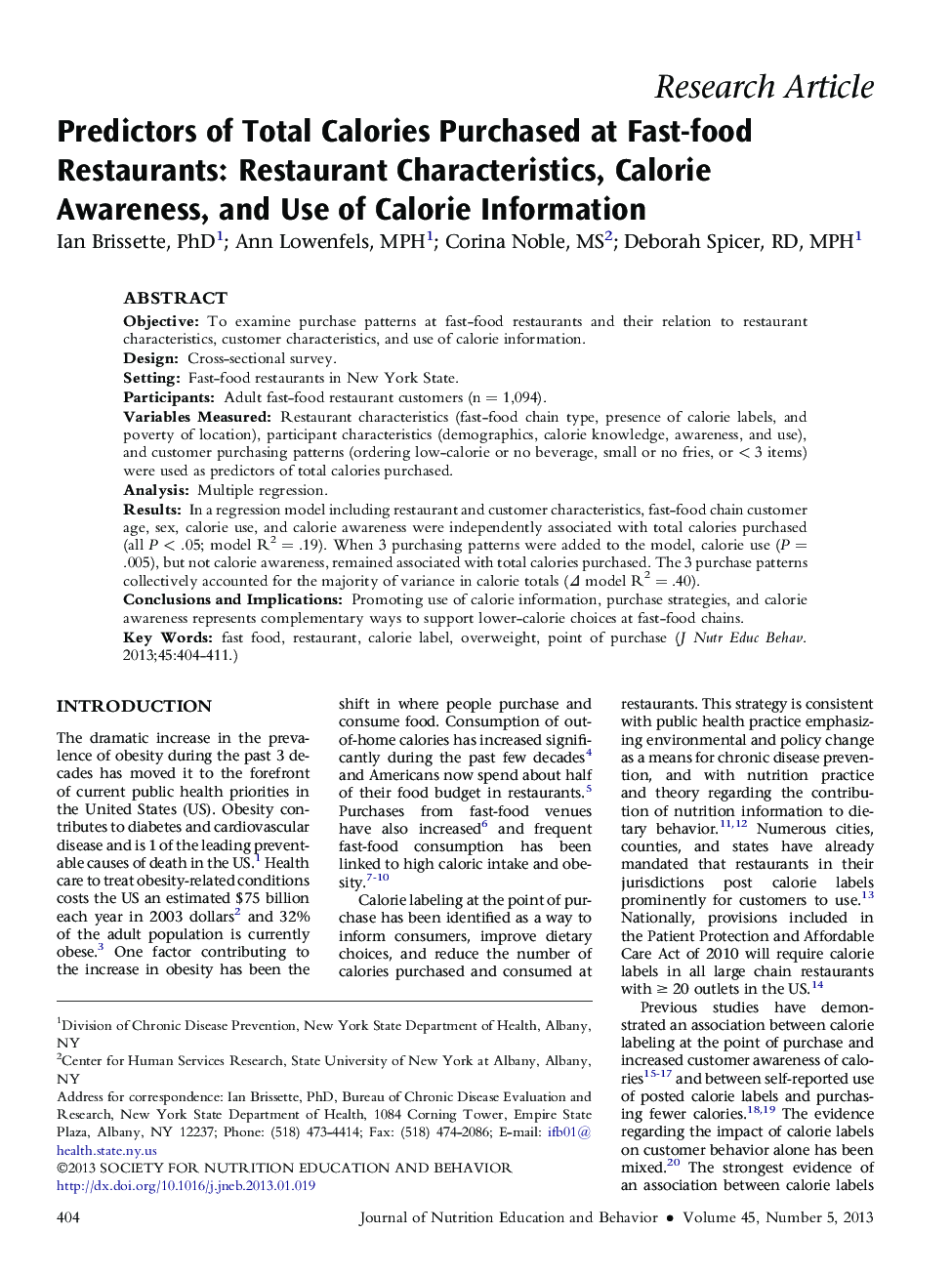| Article ID | Journal | Published Year | Pages | File Type |
|---|---|---|---|---|
| 361271 | Journal of Nutrition Education and Behavior | 2013 | 8 Pages |
ObjectiveTo examine purchase patterns at fast-food restaurants and their relation to restaurant characteristics, customer characteristics, and use of calorie information.DesignCross-sectional survey.SettingFast-food restaurants in New York State.ParticipantsAdult fast-food restaurant customers (n = 1,094).Variables MeasuredRestaurant characteristics (fast-food chain type, presence of calorie labels, and poverty of location), participant characteristics (demographics, calorie knowledge, awareness, and use), and customer purchasing patterns (ordering low-calorie or no beverage, small or no fries, or < 3 items) were used as predictors of total calories purchased.AnalysisMultiple regression.ResultsIn a regression model including restaurant and customer characteristics, fast-food chain customer age, sex, calorie use, and calorie awareness were independently associated with total calories purchased (all P < .05; model R2 = .19). When 3 purchasing patterns were added to the model, calorie use (P = .005), but not calorie awareness, remained associated with total calories purchased. The 3 purchase patterns collectively accounted for the majority of variance in calorie totals (Δ model R2 = .40).Conclusions and ImplicationsPromoting use of calorie information, purchase strategies, and calorie awareness represents complementary ways to support lower-calorie choices at fast-food chains.
